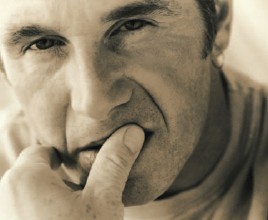Seasonal Affective Disorder

Do you feel moody or have trouble waking up when the days grow shorter and darker? Many people do—and the symptoms can range from mild unhappiness at the lack of sunshine to a clinical condition called “Seasonal Affective Disorder (SAD).” The National Institutes of Health estimates that more than 36 million Americans suffer from a seasonal depression that begins in the fall and may last until the daylight hours increase significantly.
Some of the symptoms may include:
- Loss of energy
- Oversleeping (feeling like you want to pull the covers over your head)
- Appetite changes, especially a craving for foods high in carbohydrates – often associated with weight gain
- Loss of interest in activities you normally would enjoy
- Difficulty concentrating and processing information
- Irritability
- Anxiety
Many experts blame a lack of light as the culprit. Exactly how the darker days cause depression is still in question… but the January 2008 issue of the Harvard Health Letter offered these theories: On many winter days our only exposure is to indoor lighting, which may be too weak to perk up some sufferers. Lack of light may put people out of sync with their biological clocks, so their internal timers want them in bed when they should be awake and active. Additionally, this lack of adequate bright light may disrupt brain chemicals such as serotonin and dopamine, which play a role in monitoring mood. Our brains also produce a hormone called melatonin during hours of darkness. It is involved with regulation of sleep, body temperature, and release of hormones. Some people produce too much melatonin during long dark winter months. This disrupts the internal body clock, leading to depressive symptoms.
If the above symptoms describe how you feel at about the same time every year, there is no need to brush off that yearly feeling as simply a case of “winter blues” or a seasonal funk that you believe you have to “tough out” on your own. Feel free to call my office and we can talk about treatment options. These may include light therapy (phototherapy), medications, and/or psychotherapy. Addressing the problem now can help you keep your mood and motivation steady throughout the year.

